Physical Address
304 North Cardinal St.
Dorchester Center, MA 02124
Physical Address
304 North Cardinal St.
Dorchester Center, MA 02124
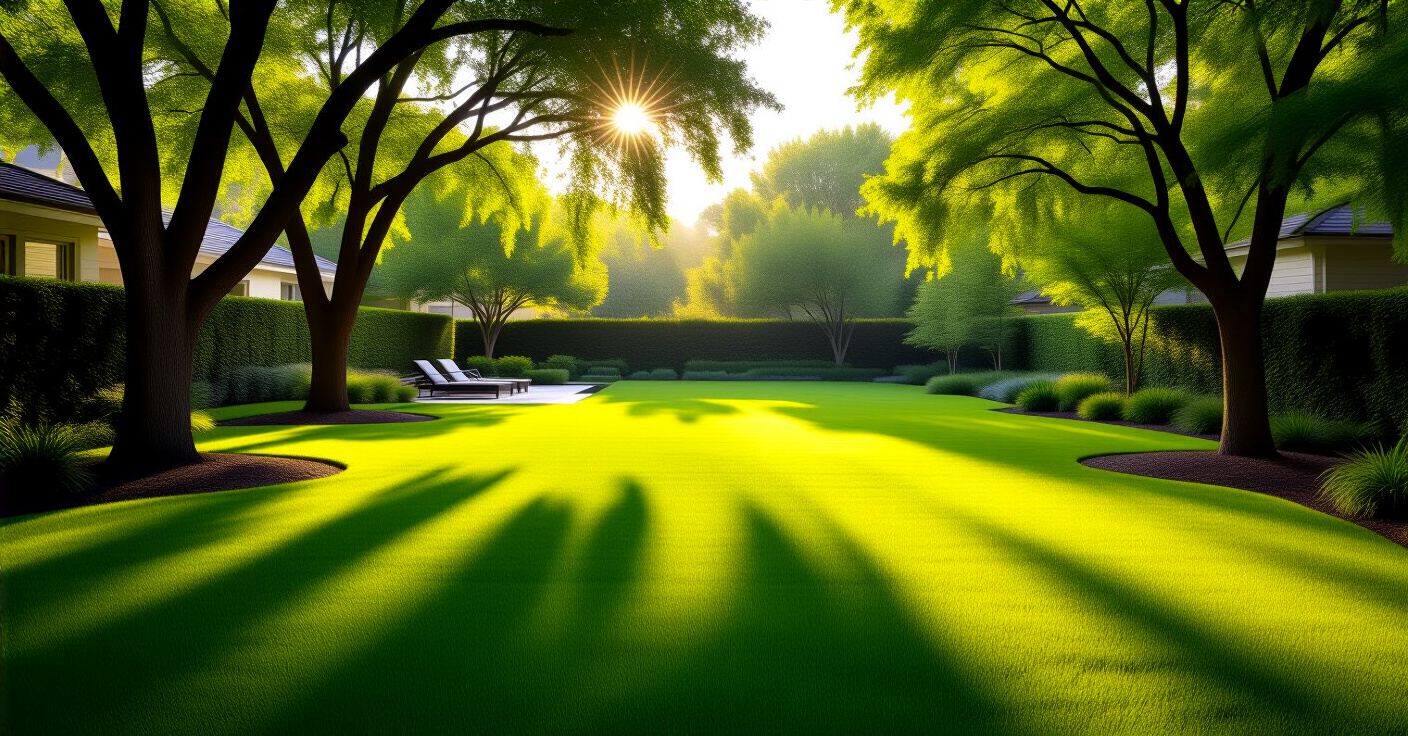
Create your calm, functional outdoor room. Explore 19 simple backyard patio designs on materials, lighting, privacy, and creating a Nordic-inspired retreat.
Can we talk about why so many people get their patios wrong? They see these beautiful pictures online—expansive stone, sprawling furniture, elaborate outdoor kitchens—and think the goal is to add as much as possible. It’s an approach of accumulation. You end up with a space that feels more like an outdoor showroom than a place for quiet connection. It’s expensive, it’s complicated, and often, it goes unused.
The secret isn’t about adding more; it’s about thoughtful reduction. It’s about creating an outdoor room that serves a genuine purpose in your life. The real story is that the best patios are simple, functional, and deeply connected to both the home and the natural world around them. This is the Nordic way. We don’t build patios for show. We build them for living—for morning coffee, for quiet evenings, for watching the seasons change. Here is how you can ignore the noise and create a space that feels right, a space you’ll actually use.
Before a single stone is laid, the most important work is done with our eyes and our thoughts. We must understand the land, the light, and our own lives. This first part is about quiet observation and honest assessment, creating a foundation of intention that will support everything else.
Before you even think about materials, you must become a student of your own garden. For a week, or even a season if you have the patience, simply watch. Notice where the morning sun first lands—this could be a perfect spot for a small café table. Observe where the warm afternoon light lingers; that might be your place for evening gatherings. Where does the wind move? Where does the rain pool? This is not about data, but about feeling.
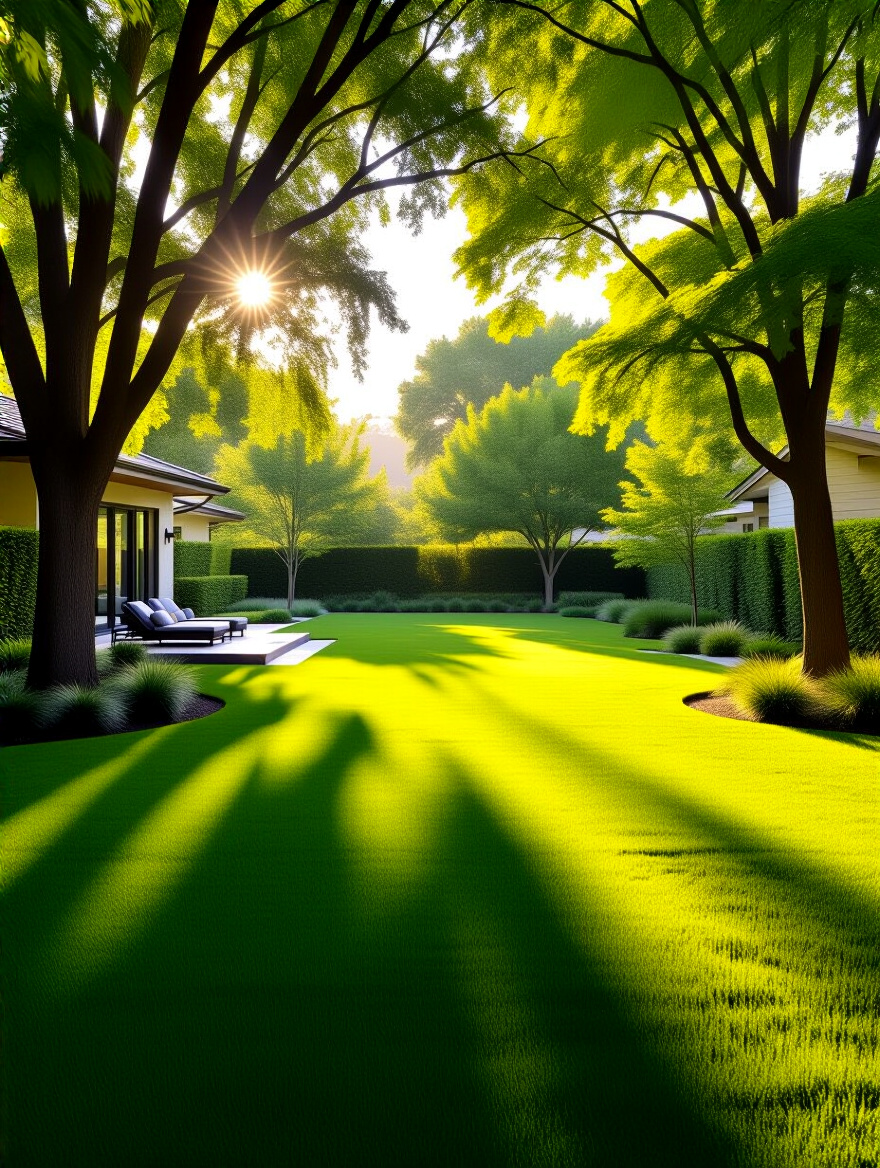
Many people make the mistake of placing a patio right outside the back door simply because it is convenient, without considering that it might be the windiest or most sun-scorched part of the yard. By observing first, you allow the land itself to tell you where the patio wants to be. It’s an act of collaboration with nature, and it ensures the space you create will be a place of genuine comfort, not a battle against the elements.
This thoughtful placement informs every decision that follows, making the next steps feel intuitive rather than forced.
This step requires a moment of quiet honesty. How do you truly live? The internet will show you patios designed for hosting 20 people for dinner, complete with pizza ovens and complex sound systems. But if your reality is quiet mornings with a book and coffee, or a safe place for two children to play, then building a grand entertainment hub is a waste of resources and spirit. Be truthful about your needs.
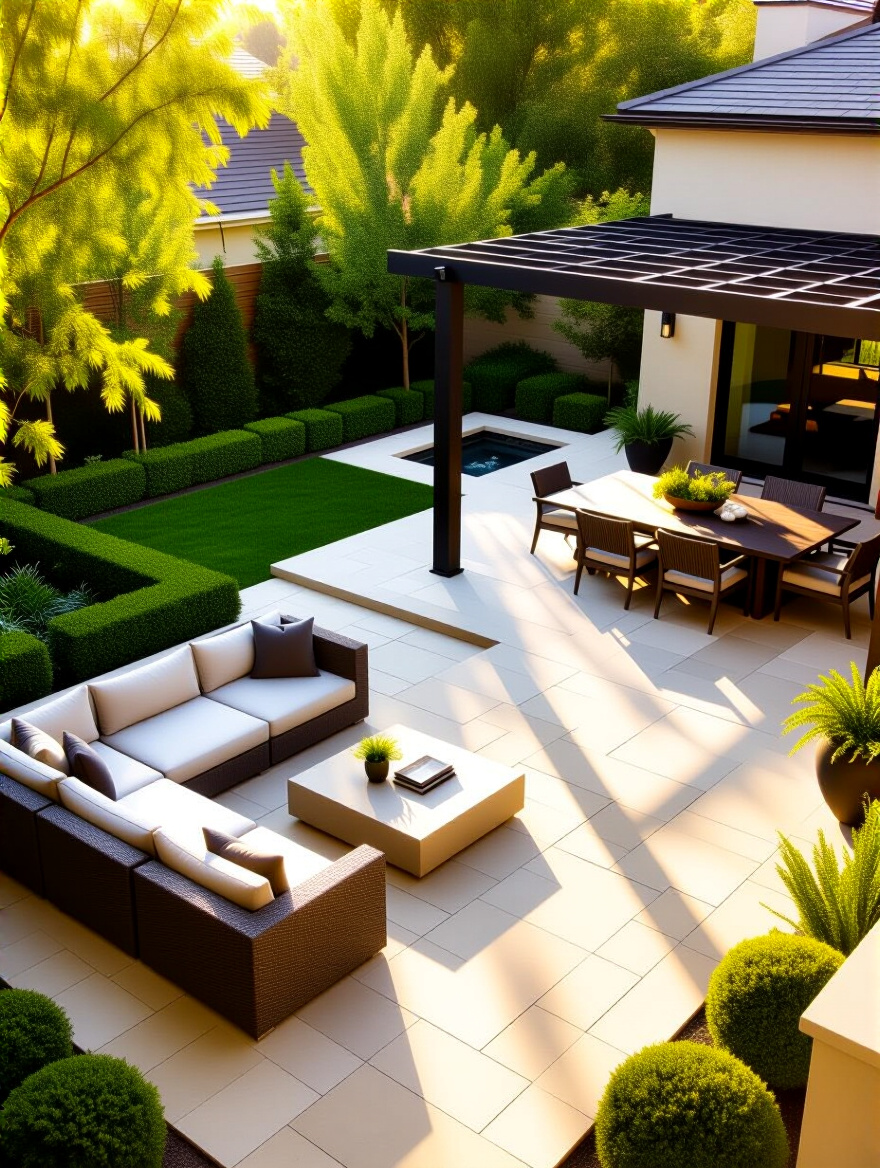
Design for the life you have, not the one you think you should have. Perhaps all you need is a simple stone platform, just large enough for two comfortable chairs and a small table, nestled in a corner of the garden that gets the best light. This honesty prevents you from building a beautiful, expensive space that you rarely use because it doesn’t align with the quiet rhythms of your daily life. A small, well-loved patio is infinitely better than a large, empty one.
From this honest purpose, a clear and simple budget can now be formed, one that serves your life instead of straining it.
A budget isn’t a wall; it’s a framework. It brings clarity and encourages clever, thoughtful solutions. Instead of seeing it as a limitation, view it as a design tool that helps you prioritize what truly matters. It’s far better to invest in high-quality, honest materials for a smaller, well-built space than to spread a budget thin on cheap materials for a large patio that will degrade quickly.
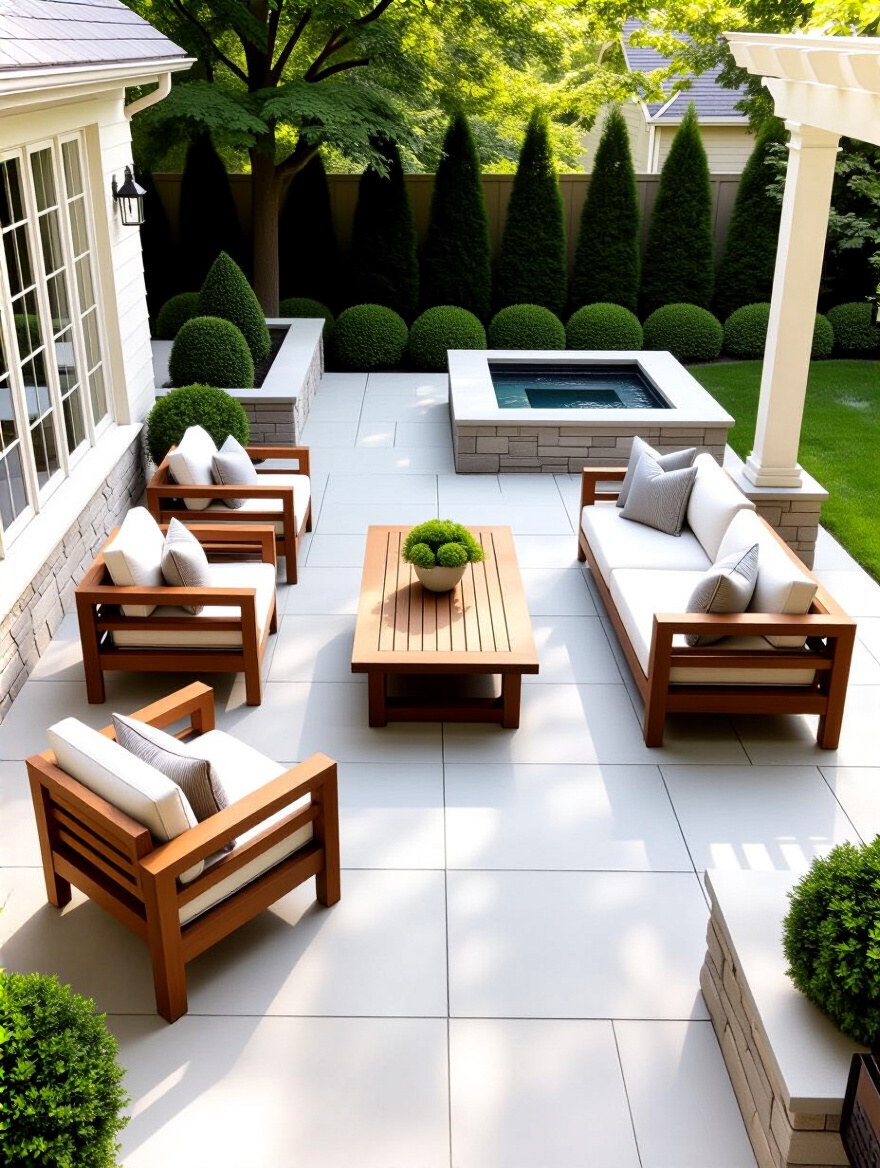
The common mistake here is underestimating the “unseen” costs—the proper sub-base, drainage work, and quality labor. These are not areas for compromise. Your budget should prioritize this foundation. If funds are tight, choose a durable, simple paver and plan to enhance the space over time with planters and furniture. Quality endures, and a well-built foundation will be there to support you for decades to come.
With your budget as your guide, you can begin to give shape to your vision on paper, a crucial step before any ground is broken.
Now, take a garden hose or a long rope and lay out the shape of your patio on the grass. Walk around it. Place your existing outdoor chairs inside the lines. Does it feel generous or cramped? How does it connect to the door of your house? This simple, physical act of sketching in three dimensions is more valuable than any complex software. It allows you to feel the scale in your body.
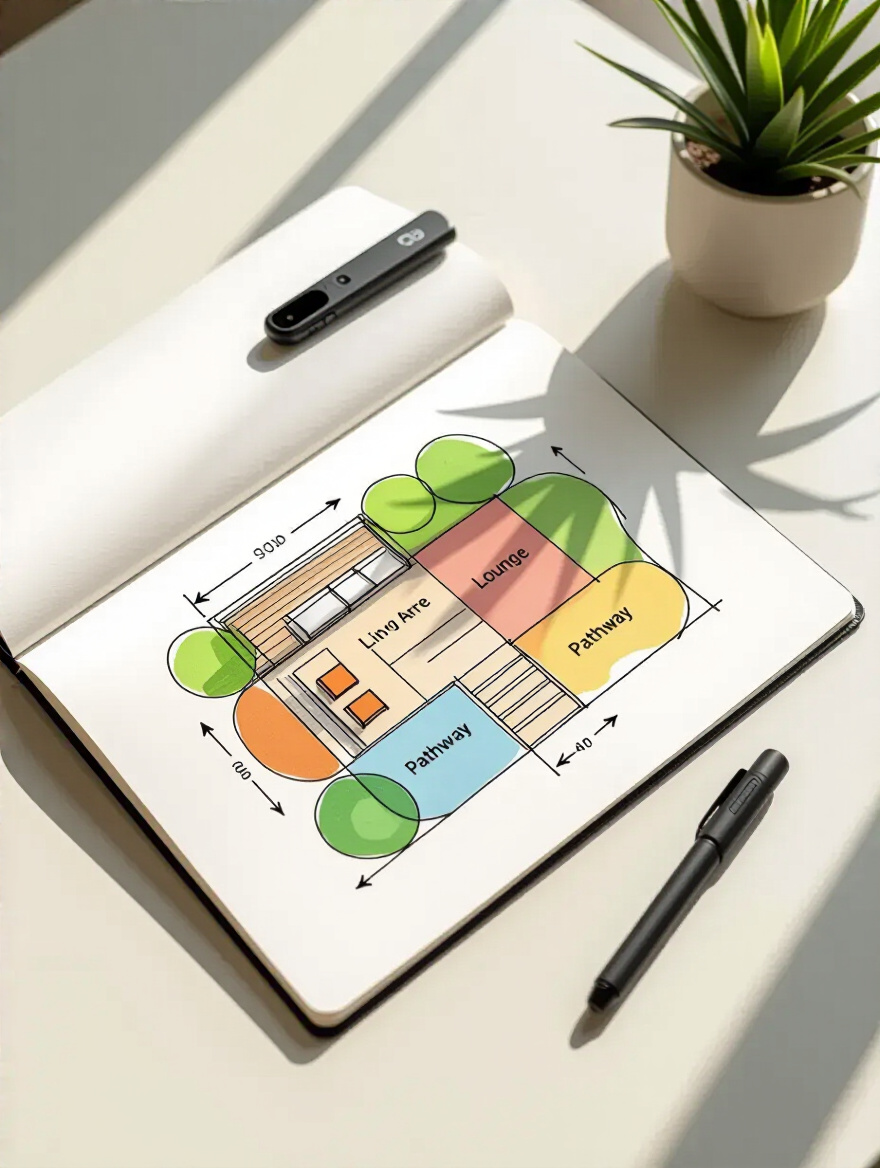
This is not about being an artist. It’s about understanding movement and space. Think of the paths people will walk. There should be a natural, easy flow from the house, across the patio, and into the garden. If you plan for a dining table, leave enough room around it so that no one feels trapped. This simple act of planning the flow prevents the common problem of a patio filled with beautiful furniture that is difficult to navigate, making it feel cluttered and unusable.
With this tangible plan in place, we can ensure the patio not only works for you, but for your wider community as well.
A patio does not exist in isolation. It is part of a home and a community. This next phase of planning ensures our outdoor room is a good neighbor—respectful of shared rules and in conversation with the architecture of the house it belongs to.
This is often seen as a chore, but I encourage you to see it differently. These rules exist to ensure that what we build is safe, respectful of our neighbors, and built to last. It is a quiet act of community responsibility. Before you get too deep into design, a simple call or visit to your local planning office can bring immense clarity and save you from future headaches.
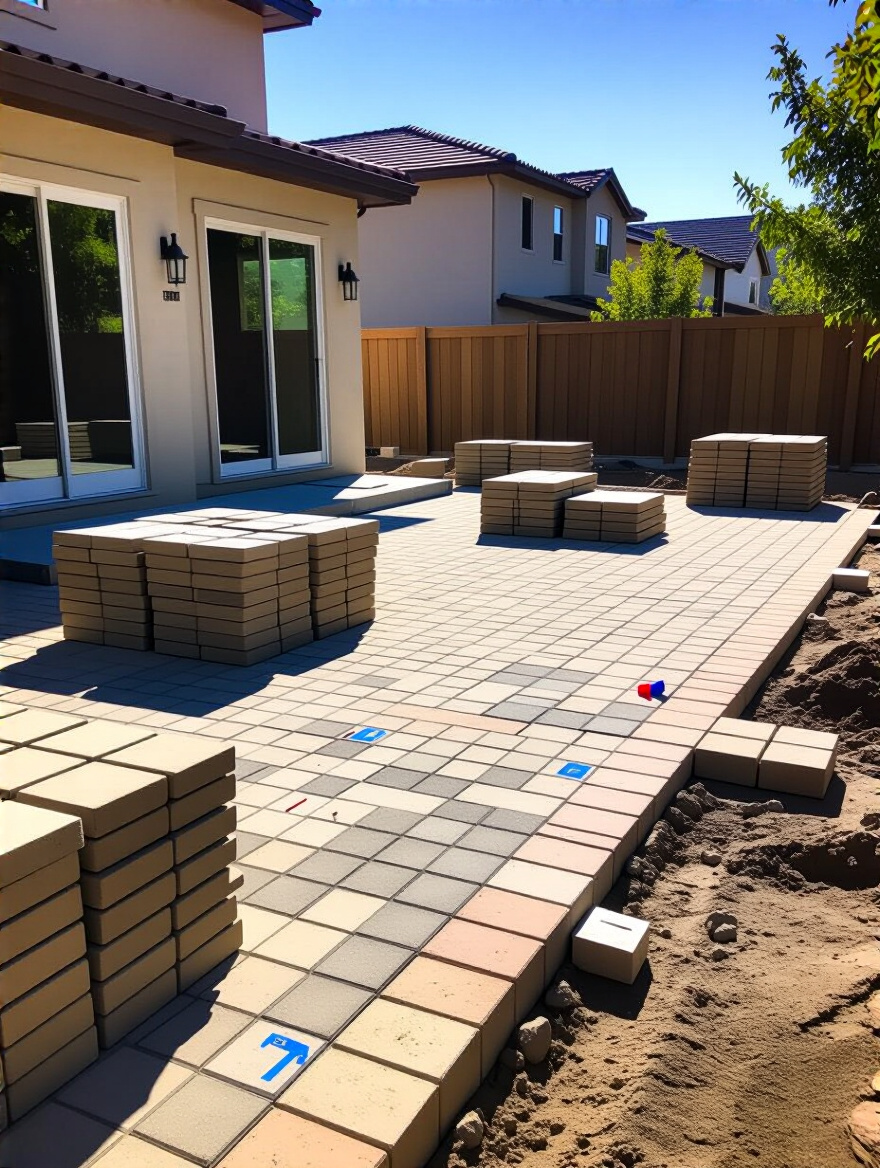
People often assume a simple patio doesn’t need a permit, but rules about water runoff, distance from property lines, or total lot coverage can be surprising. Taking the time to understand them isn’t about bureaucracy; it’s about good craftsmanship. It ensures your project starts on a foundation of respect and legality, making the entire process smoother and providing peace of mind. A patio built correctly from the ground up is one that will not cause problems for you or anyone else later.
Once you know the rules of your community, you can turn your attention to the aesthetic rules of your own home.
Your patio should feel like it grew from your home, not like it landed there from somewhere else. Look closely at your house. What are its materials? Its colors? Its lines? A modern, minimalist home might call for large-format concrete pavers and clean lines. A rustic cottage might feel more at home with irregular flagstone and softer, curving edges. The patio should be in a quiet conversation with the house.

The most successful outdoor spaces feel like a natural continuation of the interior. Consistency in tone, scale, and material is key.
The noise online tells you to follow the latest trend, but this often leads to a space that feels disconnected and will look dated in a few years. Instead, trust the language of your own home. Echo a color from the trim in your outdoor cushions. Match the texture of the stone with materials on your home’s foundation. This creates a deep, satisfying harmony that feels calm and intentional. It makes the inside and outside feel like one.
With a style that honors your home, we can begin choosing the very materials that will form the floor beneath your feet.
The true character of a patio lies in the quality of its bones. What you walk on, what holds it up, and how it handles the rain—these are the things that determine if it will be a friend for a few seasons or for a lifetime. Here, we focus on the honest, hardworking elements that are often unseen but are most essential.
The choice of material for your patio floor is a decision about feeling. How does it feel underfoot? How does it look after a rain? How will it age over the decades? Don’t be swayed by what is cheapest or most trendy. Instead, choose an “honest” material that is suited to your climate and your home. Natural stone, like slate or bluestone, has a timeless character that improves with age. Simple concrete pavers, if well-made, offer durability and quiet simplicity.
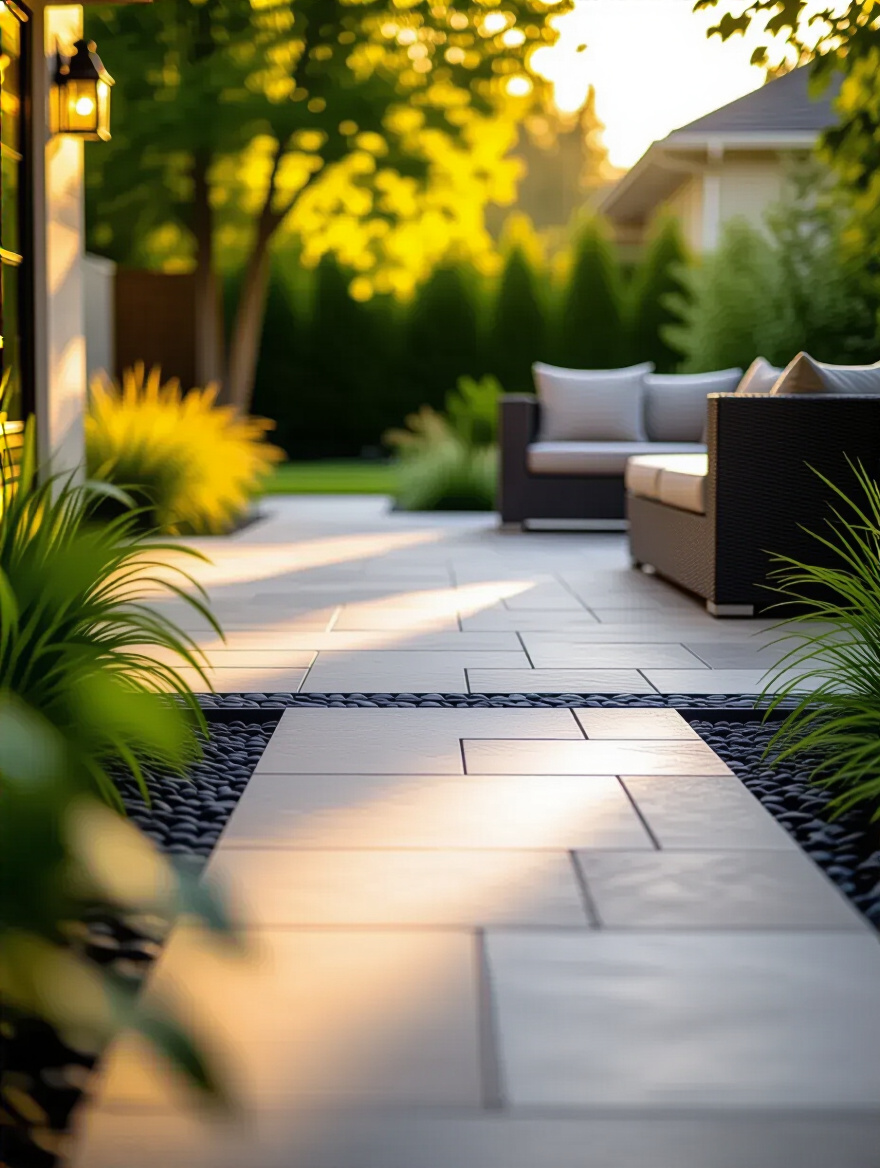
Many fall into the trap of choosing a material based on a small sample, only to find its color or texture overwhelming on a large scale. Always try to see a material in a large installation, and bring a sample home to see how it looks in the light of your own garden. An investment in a quality paving material that you love is something you will appreciate every single day for years to come. It is the stage upon which your outdoor life will unfold.
But even the most beautiful stone is worthless without a proper foundation to support it.
This is the most important part of the entire project, and it is the part you will never see. The strength and longevity of your patio do not come from the stone on top, but from the carefully prepared layers of gravel and sand beneath. To rush or economize on the sub-base is to guarantee failure. Over time, a weak base will allow stones to shift, sink, and crack.
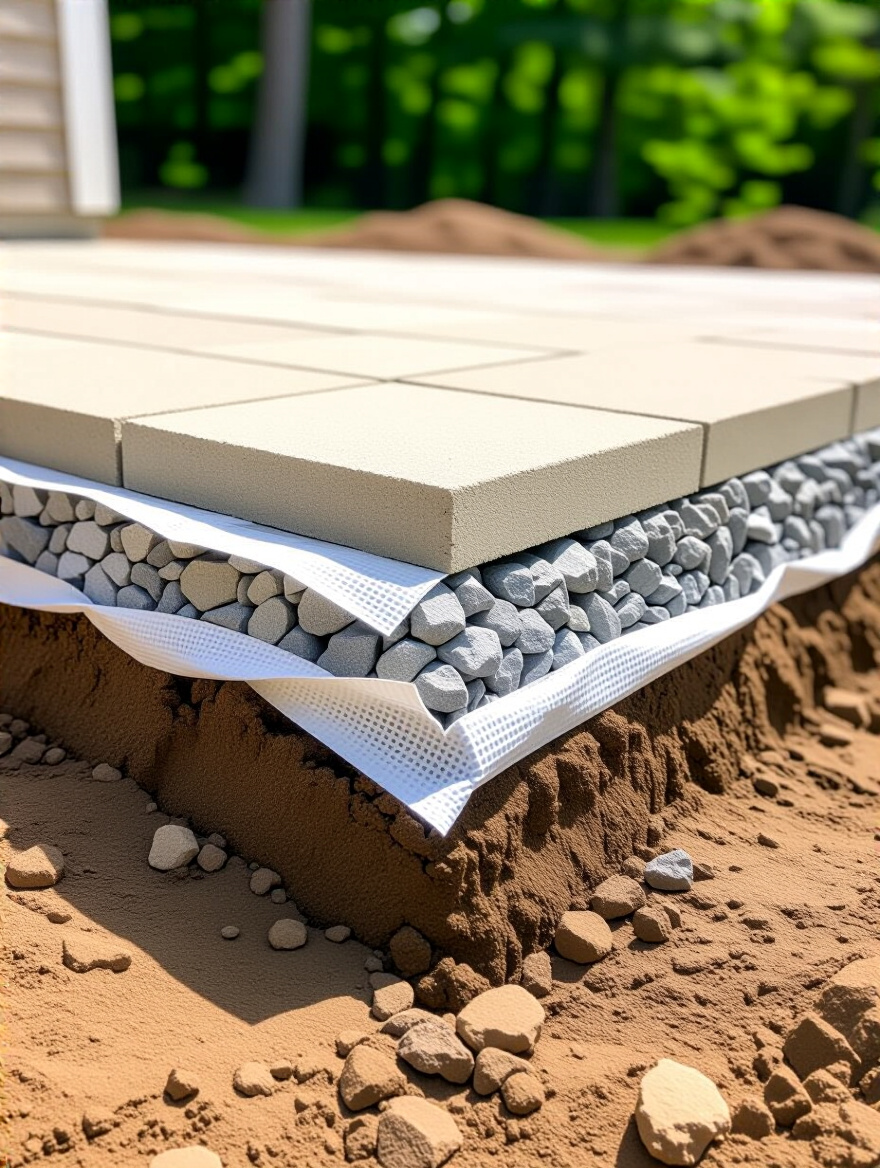
The work is slow and methodical: digging out the earth, laying down layers of crushed stone, and compacting each layer until it is perfectly firm and level. It is not glamorous work, but it is good work. It is the difference between a project that lasts five years and one that lasts fifty. Resist any temptation to cut corners here. Invest the time and money in a deep, compacted foundation. It is a gift you give to the future.
Just as a proper base manages stability, it must also be designed to manage water.
Water is a patient and powerful force. Without a clear path to follow, it will pool on your patio, grow moss in the joints, and in freezing climates, it can destroy your hard work from below. Proper drainage is not an add-on; it is an integral part of the design from the very beginning. The simplest and most effective solution is to build a gentle, almost imperceptible slope into the entire patio.
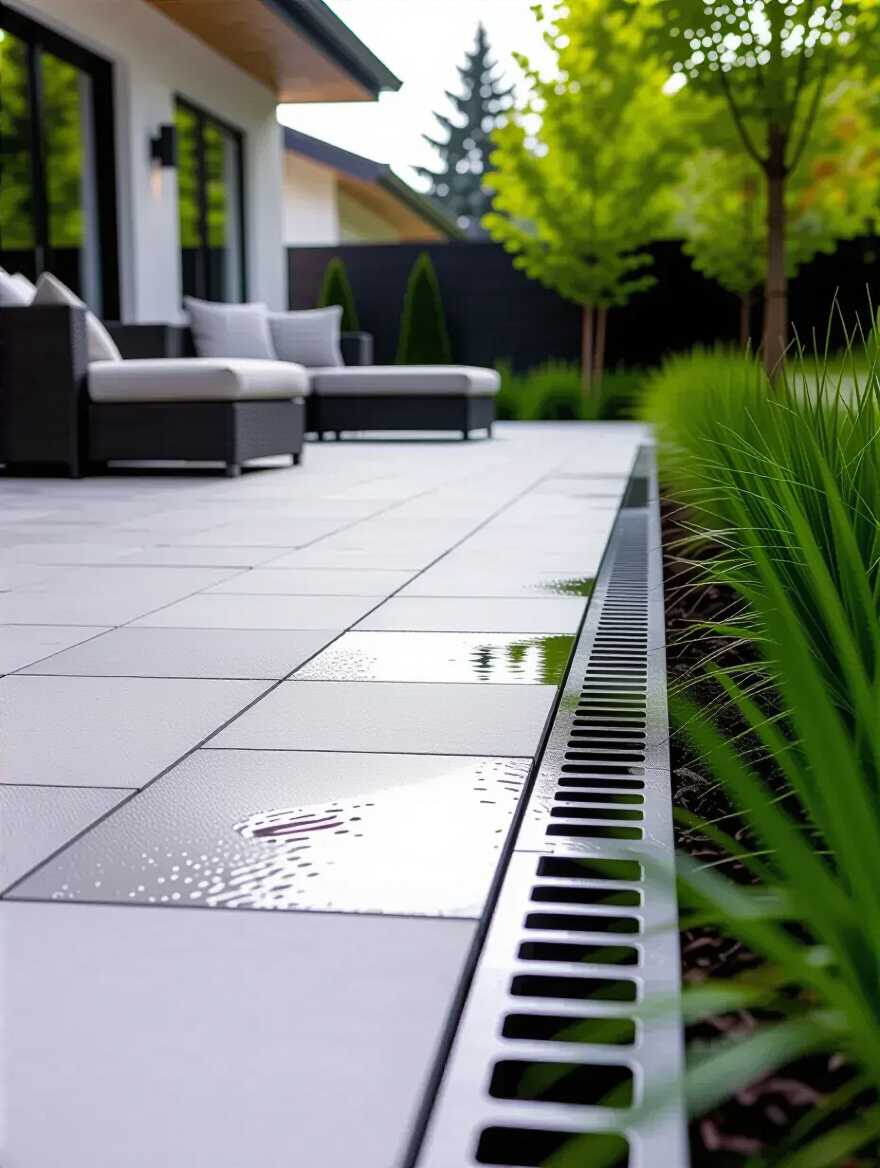
This slope, just a quarter-inch of drop for every foot, should guide water away from your home’s foundation and towards a place in the garden where it can be absorbed. For larger patios or areas with heavy rainfall, a simple trench drain can be integrated along an edge. People often overlook this, focusing only on the flat surface. But by planning for water from the start, you protect your investment and ensure your patio remains a safe, dry, and usable space for many years.
With the patio’s structure sound, we can integrate elements that provide comfort and define the space.
In a smaller space, freestanding furniture can feel cluttered. Integrating permanent seating—a simple wooden bench or a low stone wall—is an elegant solution that maximizes space and creates a sense of intention. It is a quiet way of defining an area. A built-in bench declares, “This is a place for gathering,” without a single word. It simplifies the space and leaves the floor open and uncluttered.
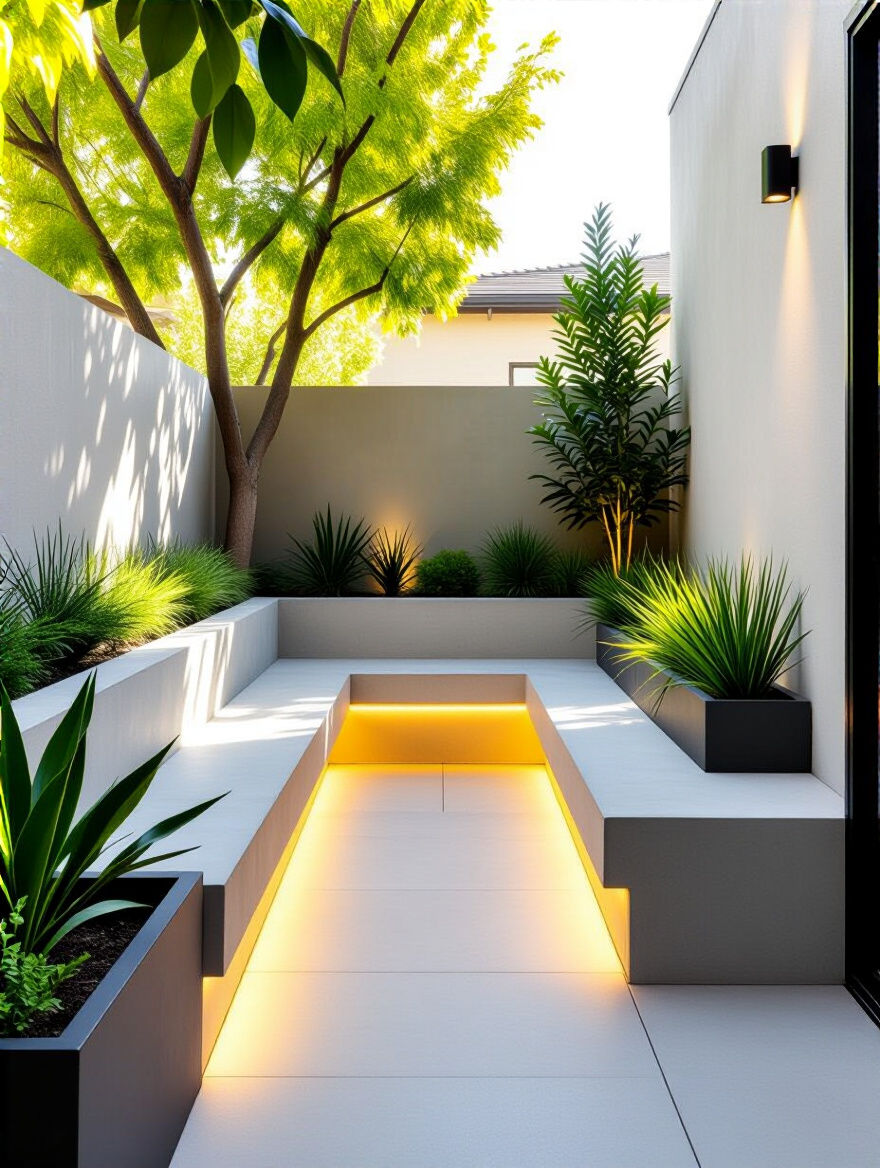
This approach embodies the principle of functionality. The wall that holds back a garden bed can also be the perfect height for sitting. A corner of the patio can become a permanent, cozy nook with an L-shaped bench. Using the same material as the patio or the house—stone, wood, or concrete—creates a beautiful, seamless look. It feels like it was always meant to be there, making the patio feel less like a collection of objects and more like a single, cohesive outdoor room.
This thoughtful integration can be extended from seating to the very light that fills the space after sunset.
As our outdoor room takes shape, we now consider the more subtle layers—light, privacy, and future possibilities. These are the elements that transform a simple stone slab into a welcoming retreat, a place that feels as comfortable and considered as any room inside your home.
A single, harsh floodlight from the house can ruin an evening outdoors. Instead, think about light in gentle layers, just as you would indoors. First, there is the functional light—a soft downlight by the door or subtle path lights for safe passage. Then, there is the ambient light, the warm glow that creates hygge. This could be simple string lights, candles on the table, or a lantern in a corner.
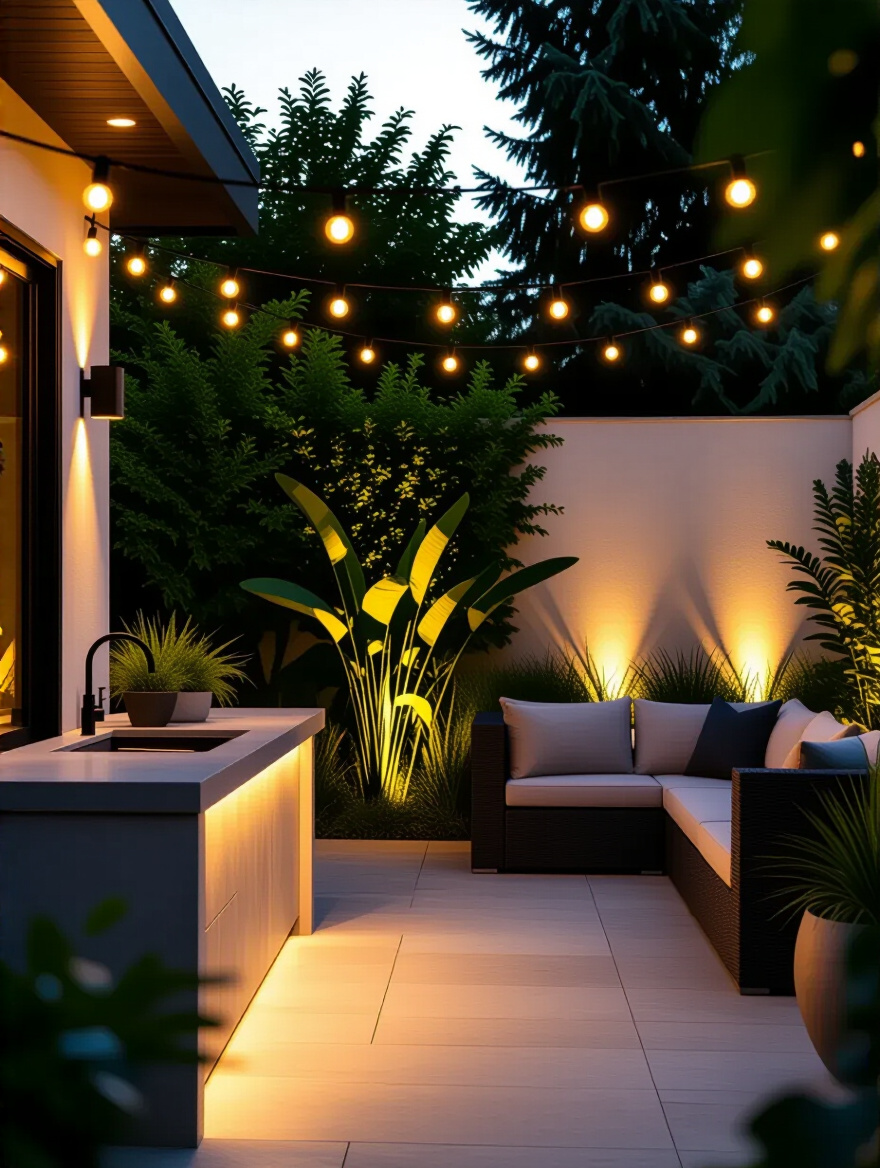
Finally, there is accent lighting—a small uplight aimed at the beautiful branches of a nearby tree or washing across the texture of a stone wall. The goal is to create soft pools of light, leaving other areas in comfortable shadow. This makes the space feel more intimate and magical at night. Resist the urge to make everything bright. The beauty of being outdoors at night is the darkness, and gentle lighting should honor that, not fight it.
With light creating a mood of comfort, we can ensure the space also feels private and safe.
Privacy in the garden is not about building tall fences that feel like fortress walls. It is about creating a feeling of gentle seclusion, a sense that you are in your own quiet refuge. This can be achieved far more beautifully with plants than with walls. A simple row of tall grasses can create a soft screen that moves in the breeze. A trellis with a climbing vine can obscure a neighbor’s view while adding life and beauty.
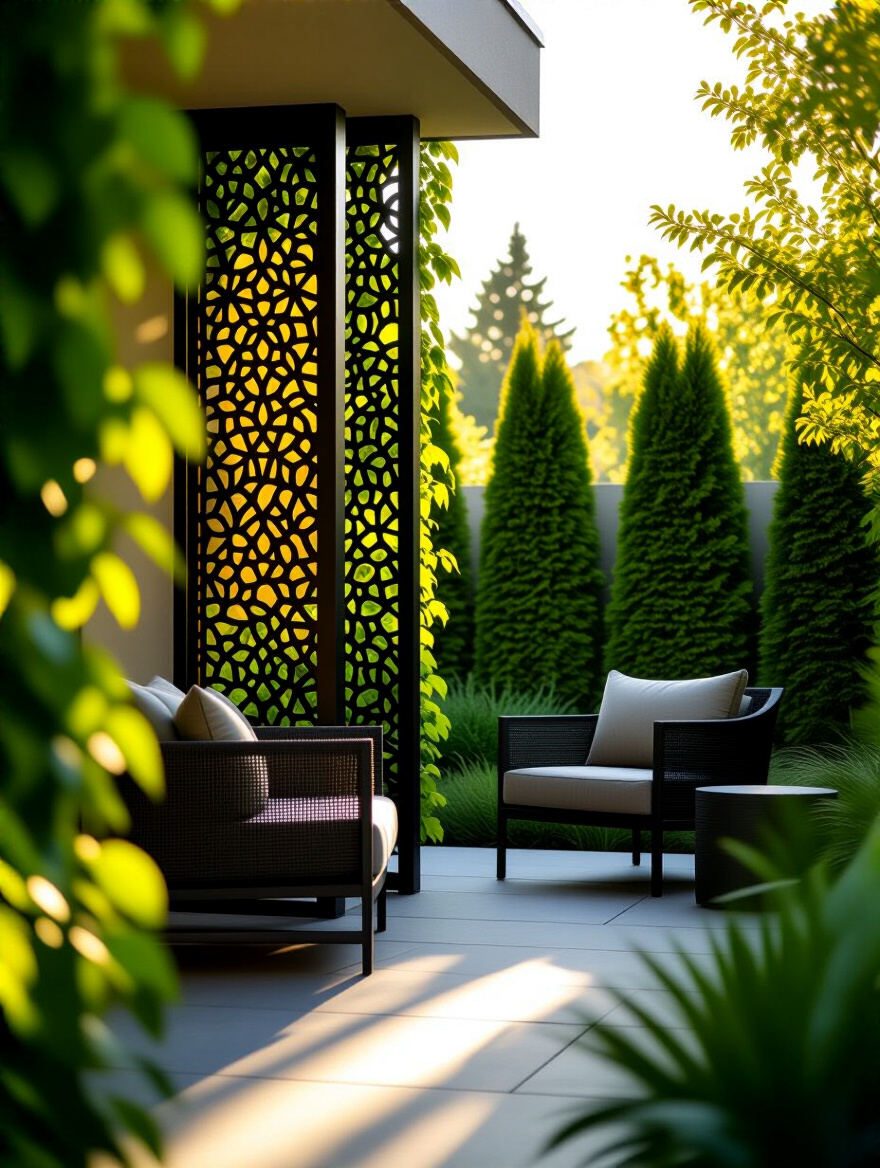
The mistake is often to think in terms of solid barriers. A better approach is to use strategic, layered screening. Perhaps a single, well-placed decorative panel blocks the most direct line of sight, while shrubs and small trees create a softer, deeper sense of enclosure. This layered approach feels more natural and less confining, creating a sanctuary that still feels connected to the wider world.
Just as we plan for privacy, we should also plan for the possibility of future growth and function.
Even if an outdoor kitchen is not in your current plan or budget, if you have even a small thought that you might want one someday, this is the moment to prepare. It is far simpler and less expensive to run an electrical conduit or a gas line before the patio is laid than it is to tear up your beautiful work years from now.
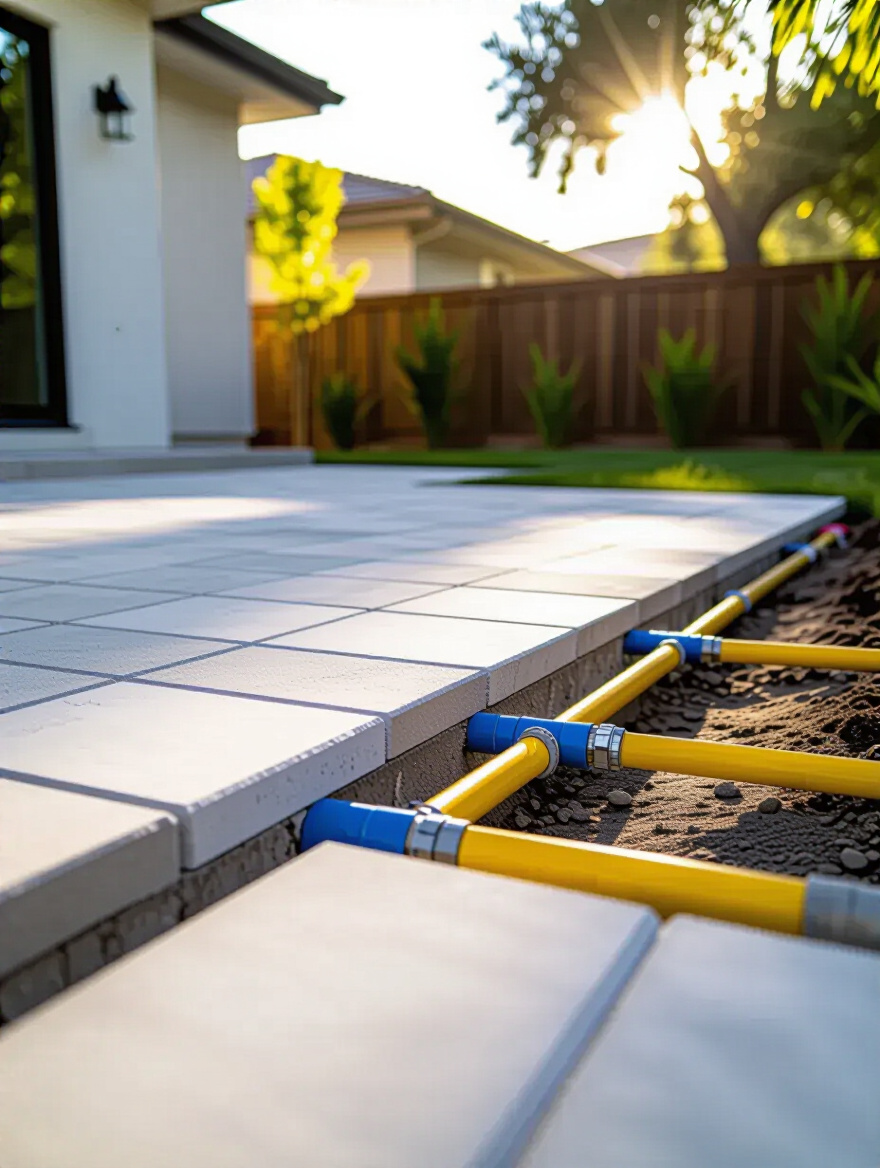
This is an act of foresight. It doesn’t mean you need to build anything now. It is simply about laying the unseen groundwork for future possibilities. Cap the lines safely underground and make a careful map of where they are. This small investment of time and money now keeps your options open, ensuring your patio can evolve with you and your family over time without destructive and costly renovation.
Now, with the fundamental structure and hidden potential in place, we can furnish our new outdoor room.
With the strong, simple foundation of our patio complete, we can now add the layers of comfort that make it feel like a true extension of the home. This is not about decoration for its own sake, but about choosing elements that enhance livability, soften edges, and bring personality and life to the space.
The principle of “fewer, but better things” is never more important than with outdoor furniture. Resist the lure of cheap plastic sets that will crack and fade in a season. Instead, invest in a few well-made pieces crafted from honest materials that can withstand the elements—teak that silvers with age, powder-coated metal, or high-quality all-weather wicker.
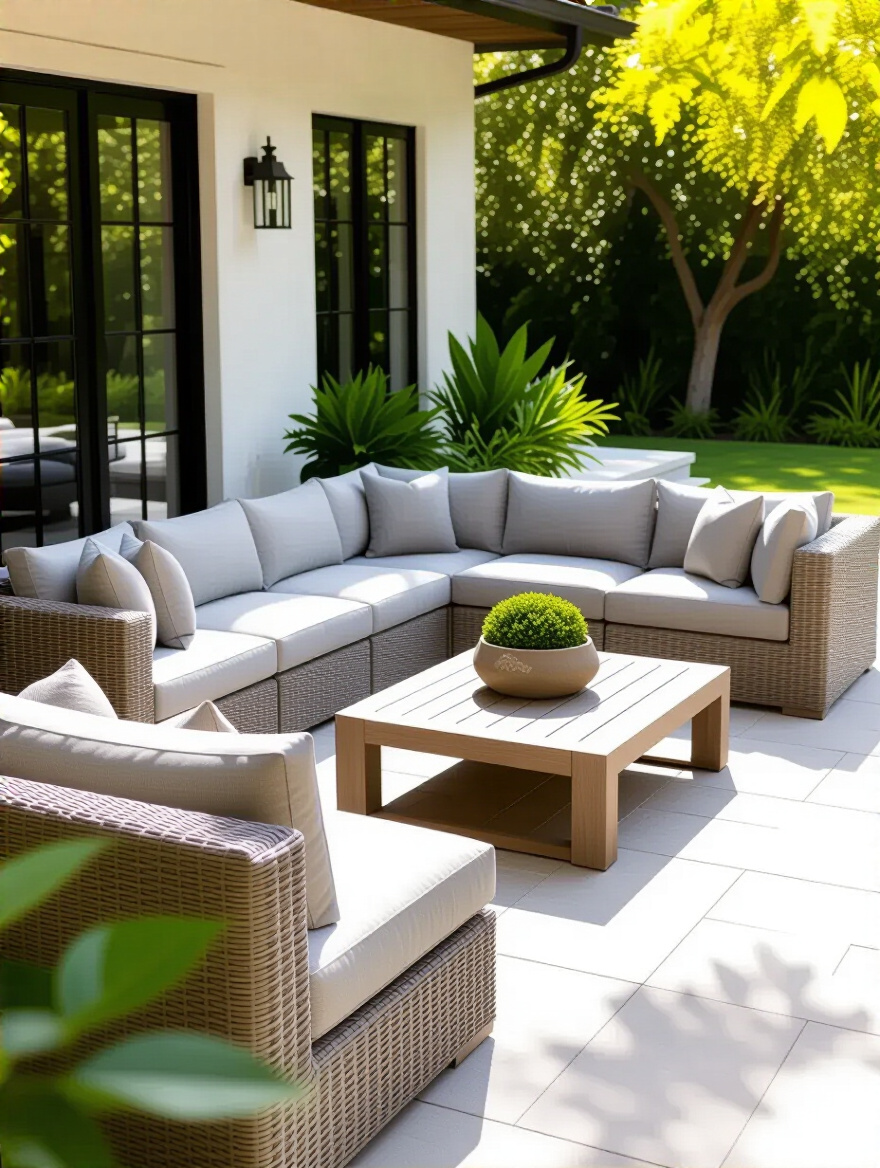
Comfort is not a luxury; it is the entire point. Choose chairs you can truly relax in. Test them. Sit in them. If you use cushions, invest in high-quality outdoor fabric that resists water and sun. A few incredibly comfortable chairs are far more useful than a large set of unpleasant ones. And when not in use, simple covers can dramatically extend the life of your investment.
These well-chosen pieces provide the structure for comfort, which can be enhanced with softer touches.
Decoration outdoors should be simple and meaningful. It’s not about cluttering the space with objects. Instead, think of adding a few key elements that provide comfort and beauty. A simple, durable outdoor rug can define a seating area and add a wonderful softness underfoot. A few weatherproof pillows in a color that connects to your indoor palette can tie the spaces together.
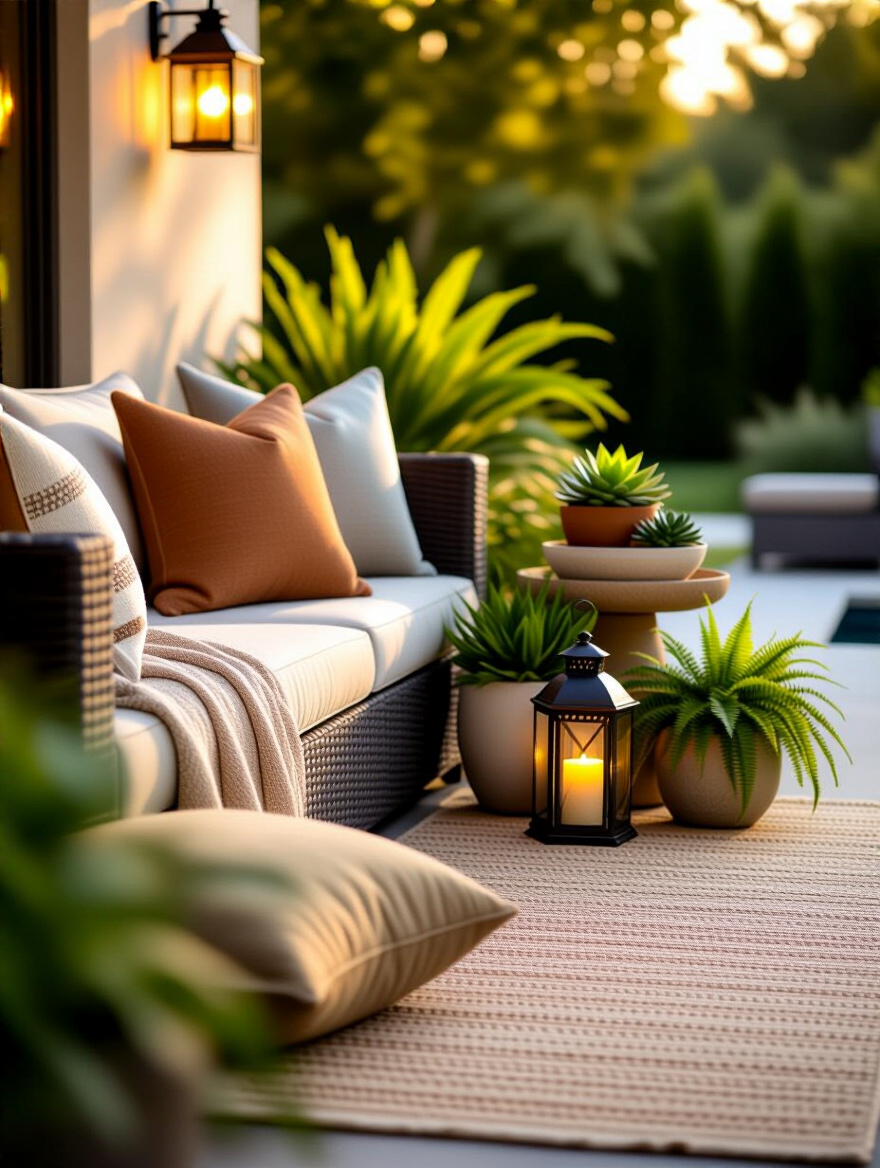
The biggest mistake is bringing indoor items outside. They will be ruined by a single rainstorm. Instead, choose items designed for the outdoors—pots for plants, throws made of durable wool for cool evenings, and lighting from candles or solar lanterns. Let the primary decoration be the changing light, the surrounding plants, and the sky above. Your accessories should support this, not compete with it.
Nature, of course, is the most important accessory of all, and we should invite it in.
A patio made entirely of stone or wood can feel hard and sterile. The solution is simple: soften the edges with life. Use planters to introduce greenery directly onto the patio surface. A cluster of pots in various sizes can create a small garden in a corner. A long, narrow planter can define an edge or serve as a screen.
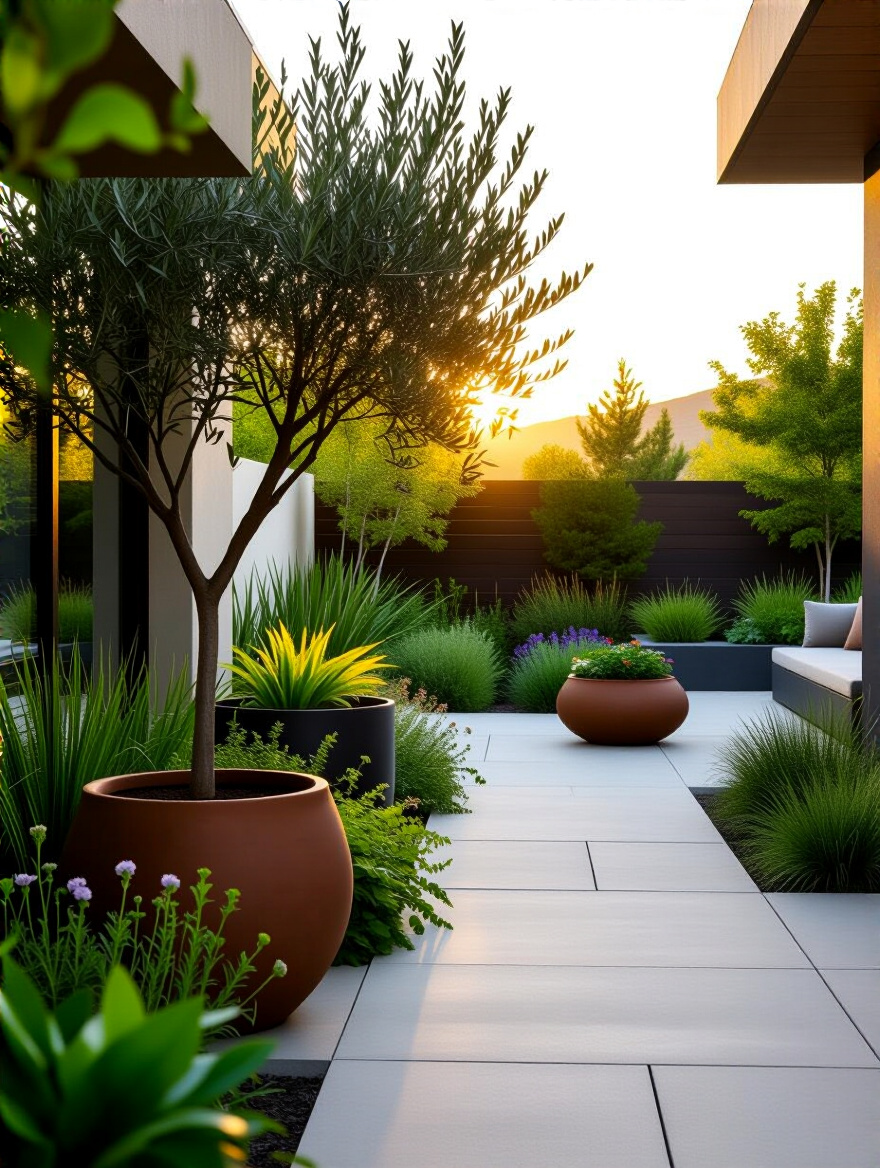
Choose plants that offer different textures and forms—soft grasses, structural evergreens, and seasonal flowers. Planting a climbing vine like clematis or jasmine to grow up a post or a wall connects the horizontal surface of the patio to the vertical world around it. This blurring of the lines between the built and the natural is what transforms a simple hardscape into a true garden oasis. It makes the space feel alive.
To enjoy this living space to its fullest, we must be able to control our biggest source of light and heat: the sun.
On a hot summer day, a patio without shade is a patio that cannot be used. Shade is not an afterthought; it is a critical component of a functional outdoor room. The right solution depends on your needs and your home’s style. A large, high-quality cantilever umbrella offers wonderful flexibility. A simple pergola creates a sense of enclosure and can be covered with fabric or, over time, with beautiful green vines like wisteria or grapes.
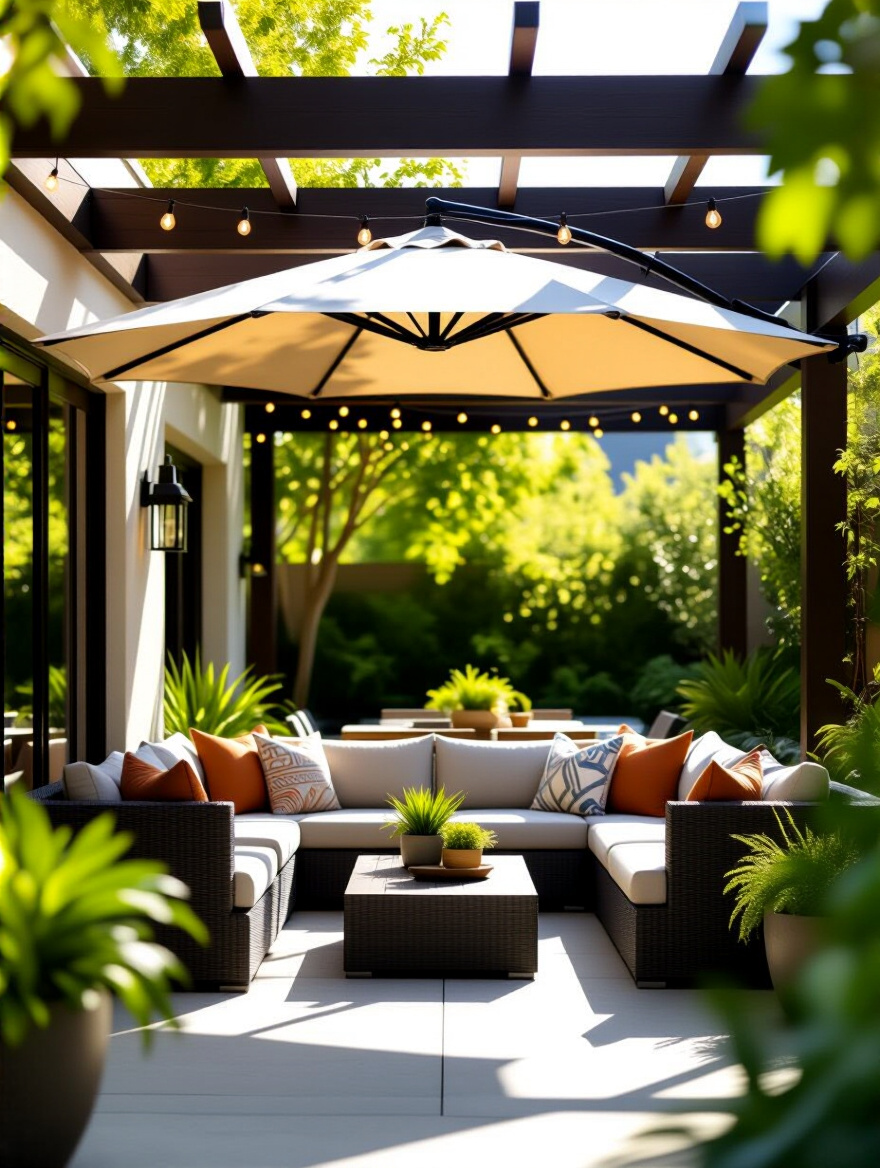
Consider how the shade structure will look not just from the patio, but also from inside the house. A pergola can frame a beautiful view from a kitchen window. Avoid cheap, flimsy umbrellas that will break in the first strong wind. Invest in a solution that is both beautiful and robust, one that will provide a cool, dappled refuge on the warmest days, extending the hours you can comfortably enjoy your space.
And just as we can create shade from the sun, we can also create warmth against the cold.
A truly successful patio is one that is used, loved, and cared for across seasons and over many years. This final stage is about extending the usability of your space into the cooler months and establishing simple, sustainable rhythms of care that will preserve its beauty and integrity for the long term.
For those of us in cooler climates, the outdoor season can feel frustratingly short. A simple source of warmth can easily add months of enjoyment to your patio each year. This doesn’t require a complex or expensive system. A simple, well-made portable fire pit can become a wonderful focal point for gathering on a crisp autumn evening, providing both physical warmth and the wonderful, primal glow of a real fire.
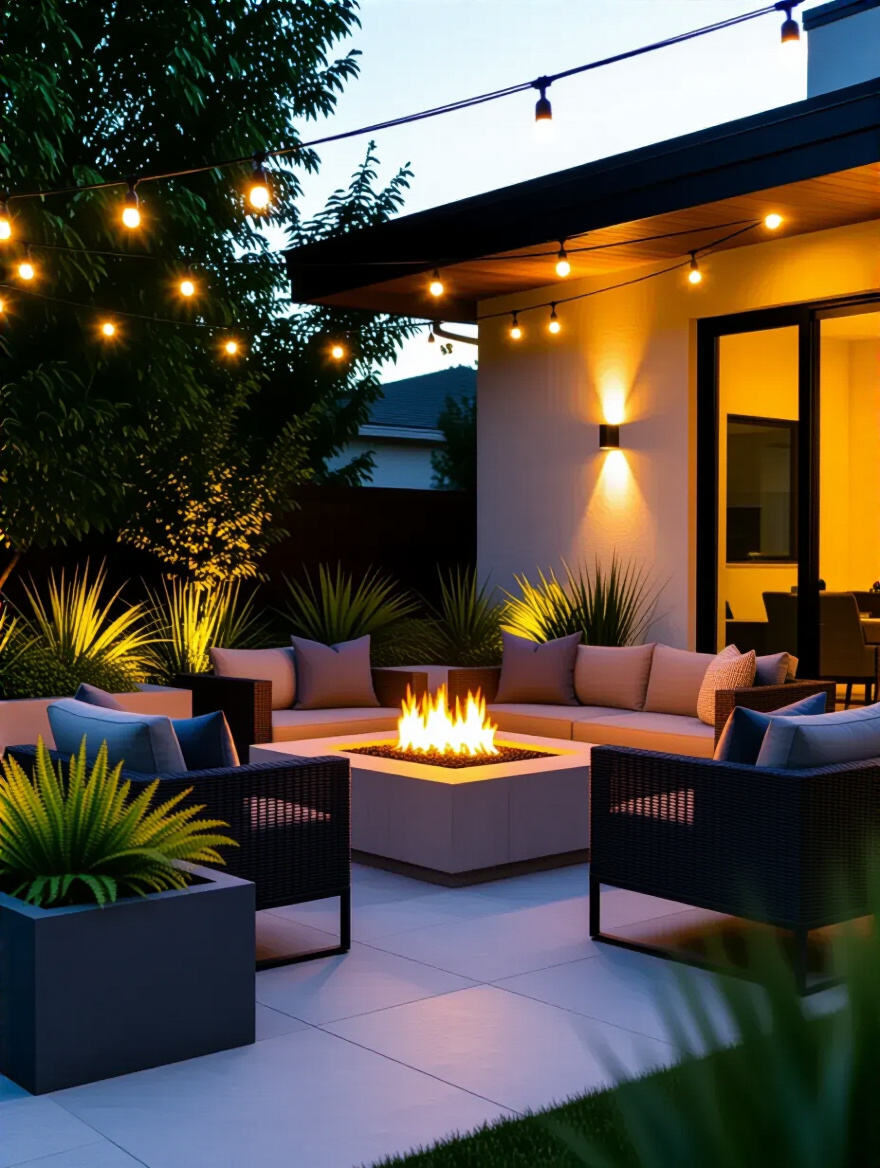
There are many options, from simple wood-burning bowls to clean-burning gas fire tables or discreet overhead electric heaters. The key is to choose a solution that fits the scale of your patio and your lifestyle. What matters is the ability to take the chill off the air, allowing you to stay outside longer, wrapped in a blanket, enjoying the quiet of the changing seasons. It transforms the patio from a summer-only space to one you can inhabit for much of the year.
This extended use means our patio will require consistent, gentle care to keep it looking its best.
Your patio is a room of your house, and it deserves the same gentle, regular care. This is not about harsh chemicals or laborious scrubbing. It is about a simple, consistent rhythm. Once a week, sweep away leaves and debris. This small act prevents them from decaying and staining the stone. After a dinner, wipe up any spills right away.
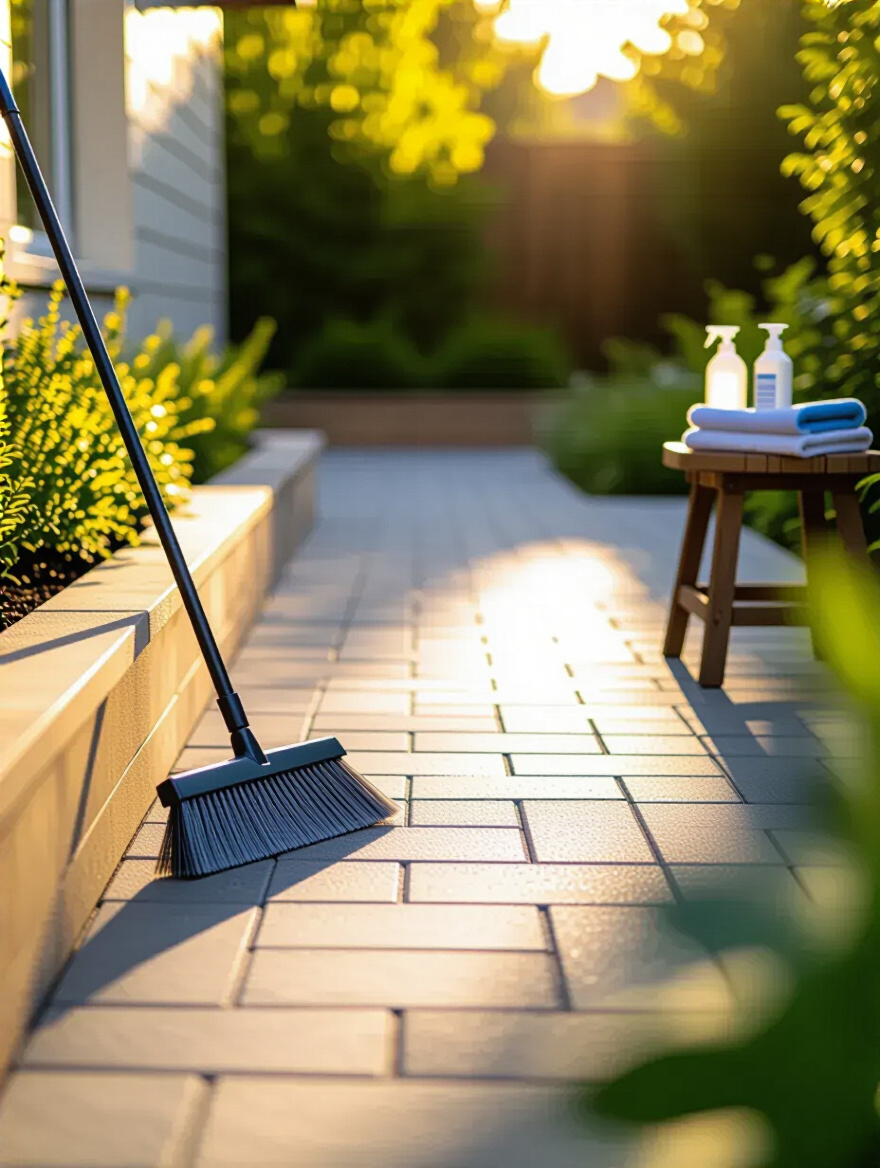
Think of maintenance not as a chore, but as an act of stewardship. You are caring for a beautiful and functional part of your home.
Once or twice a year, give the patio a more thorough cleaning with a gentle soap and a stiff brush. Check the joints between pavers and replenish with sand where needed. This simple routine will keep your patio looking fresh and will prevent small problems from becoming large, expensive ones. It is a quiet practice that ensures the space you have so thoughtfully created remains beautiful and welcoming for many years to come.
We have walked through these 19 considerations, not as a checklist to be completed, but as a series of thoughts to guide you. The goal was never to create a “perfect” patio according to some magazine’s standards. The goal is to create your patio—a space that honestly reflects how you live, a place that brings you a sense of calm and connection. You don’t need to do everything at once. True quality is built over time.
By focusing on a strong foundation, honest materials, and a clear purpose, you are creating more than just an outdoor surface. You are crafting an outdoor room, a sanctuary for quiet moments and joyful gatherings. You are extending your home into the natural world in a way that is both beautiful and deeply functional. So, begin simply. Take one idea from this conversation and let it inspire you. Sketch a design, observe the light in your garden, or simply find the perfect chair. Your outdoor room is waiting.